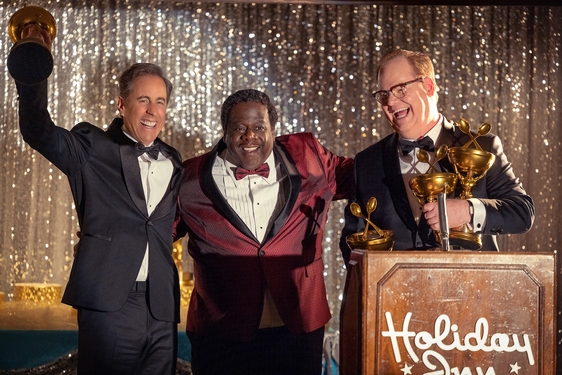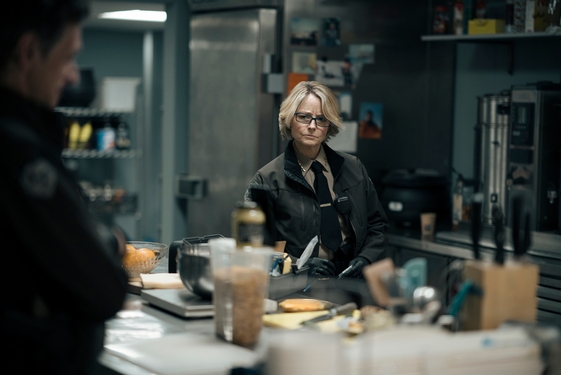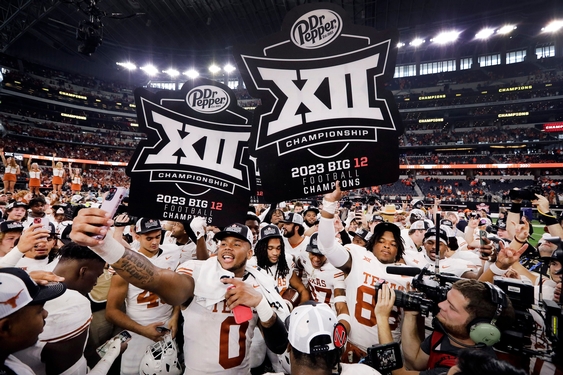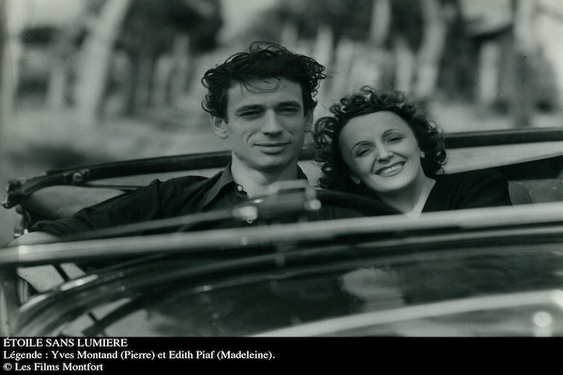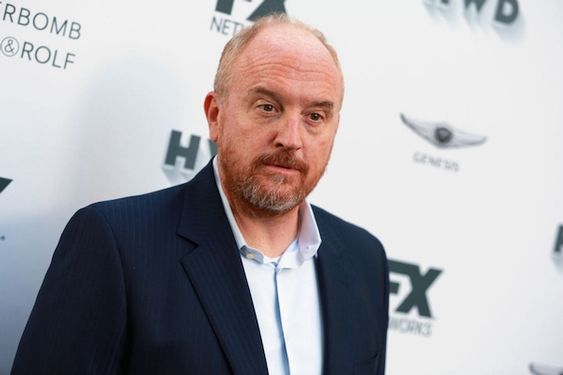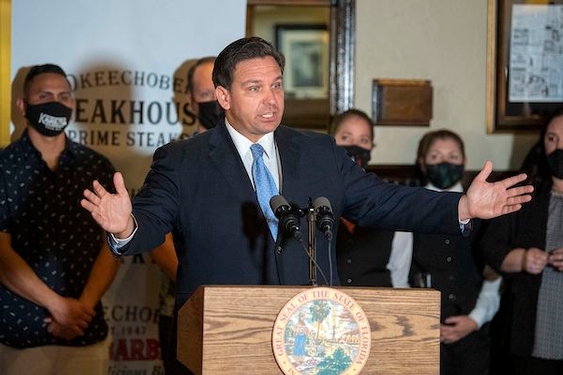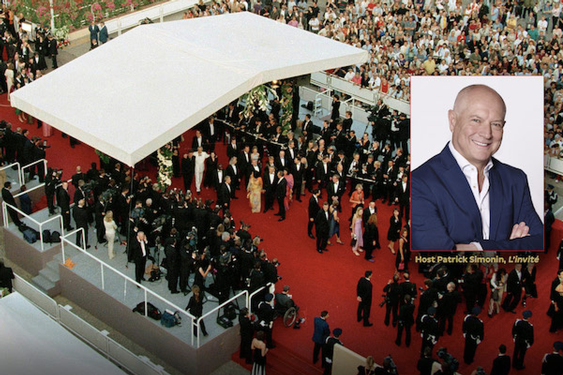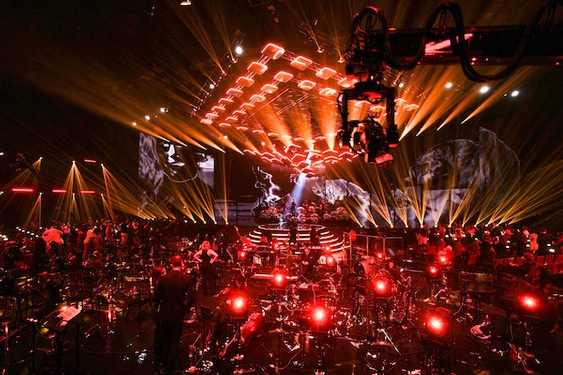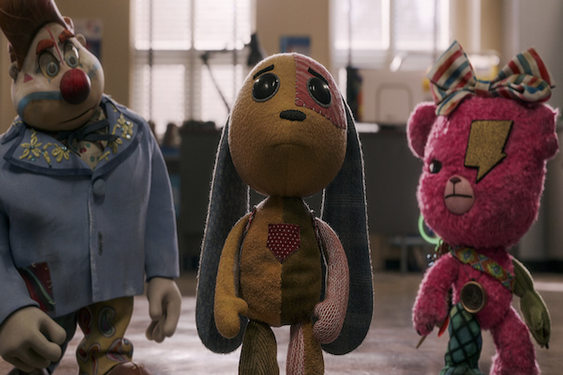There are a world of reasons to recommend HBO’s six-part adaptation of Philip Roth’s “The Plot Against America,” which premieres Monday night at 9 p.m.
The limited series created by David Simon and Ed Burns features some of the finest performances you will see anywhere on any screen this year. And almost everyone in the cast delivers: John Turturro, Winona Ryder, Morgan Spector, Zoe Kazan, Anthony Boyle, David Krumholtz, Caleb Malis and Azhy Robertson.
The alternate history — which has aviation hero Charles Lindbergh, an isolationist, anti-Semite and Nazi sympathizer, beating Franklin Roosevelt in the 1940 presidential election and driving the nation toward fascism — also offers one of the richest and most nuanced explorations of Jewish identity and family life that TV has ever offered.
There’s an authentic exploration of working class identity, too. The world of the New Jersey family at the heart of this drama, is steeped in the constant money worries of working class Americans trying to survive at the tail end of the Great Depression. This kind of personal and cosmic economic angst, which so many Americans still experience as result of the gross economic inequality today, is rarely explored with any kind of sensitivity or depth on TV.
But, according to Simon, none of that matters as much as the political allegory to Donald Trump’s America that Roth’s rich text offered to anyone willing to take on the challenge of adapting it for today’s audience.
“I understood that generation of Jewish American community, because I was raised in a Jewish American household and I remember my grandparents and my parents. And I read a lot of Roth, so obviously I had some familiarity with his milieu. And that was fun,” Simon said in a telephone interview.
“But the point of doing this is not (to do) a tease on anti-Semitism. It doesn’t work as that. There’s no point in relegislating 1940, the run-up to the Holocaust, isolationism or Lindbergh. That’s not the point of the piece,” he continued.
The point of the piece: “There’s an allegory here,” Simon said. “That’s the only reason to do it.”
The allegory involves what’s happening to America under the presidency of Trump, particularly how disinformation, propaganda, ignorance, economic insecurity, racism and fear are being used to consolidate autocratic power and drive Americans farther and father apart into highly polarized, antagonistic and, finally, warring tribal camps.
“Everybody who’s read the book — and obviously that book has had a second life since 2016 — everybody who’s read the book who I’ve talked to anyway is entirely aware of allegory. It’s startling how much Roth got right about demagoguery and its reliance on fear of the other,” Simon said.
Allegories are not perfectly literal. Lindbergh was an actual hero who flew across the Atlantic in an act of daring and what many would characterize as bravery. Trump is no kind of hero and is not known for any such act.
But both worship at the altars of a fascist strongmen: Lindbergh with Adolph Hitler and Trump with Russian President Vladimir Putin. And just as President Lindbergh’s policies in this alternative history result in persecution of Jews, so have Trump’s policies resulted in immigrant children being separated from their parents at the southern border, put in cages, and in some instances, dying.
The family at the heart of Roth’s book, a Jewish American family named the Roths, was rapidly assimilating. And that matters, too, in terms of the allegorical connection to those assimilating to American life today, according to Simon.
“They’re becoming Americans very fast,” Simon said of the family that was renamed the Levins in his HBO series, “which, of course, puts the lie to all of the rhetoric about this new immigrant group: ‘We can’t rely on their loyalty. They may not be as American as we are. They may not believe in the same things. Their politics may be suspect.’”
Simon said that the same things that were being said about Jews in 1940 in that “dry run at fascism under Lindbergh” is the “precise fuel that the current run at fascism” feeds on.
“The cohort that’s now being threatened is not Jews, although anti-Semitism is also on the rise, because that train is never late once intolerance is given its place,” Simon said. “The fact is the cohorts who are most vulnerable, who are being abused, whose civil liberties and human rights are being affronted at the southern border or certainly in the trauma at our airports in the immediate aftermath of the inauguration, those people are black and brown and Muslim.”
There is at least one other strong allegorical connection between Lindbergh and Trump that is important: They are both dangerous products of the rise of mass media and celebrity culture. Yes, Lindbergh did something many consider heroic, but he had no real intellectual or political resume to be president. He was, however, highly photogenic, so newspapers and magazines couldn’t get enough of his visage. And radio, which starting in the 1920s had created the very idea of broadcasting from one point to many through its technology, breathlessly celebrated his life and aerial accomplishments. Radio was the crucible of the national conversation in Depression-era America.
Television, the next iteration in broadcasting, was the vehicle for Trump to become intimately familiar to a mass audience through his career on a reality TV show.
I think the series could have done more with the relationship between media and celebrity and the way it has poisoned our politics, but maybe that is only because I am a media critic. And there certainly is a strong, embedded, visceral sense in the series of how mass media both feeds off of and feeds passions, with the radio in the Levin household constantly carrying the voice of Walter Winchell, a tabloid version of the kind of resistance to Lindbergh that MSNBC’s Rachel Maddow sounds on cable TV against Trump today.
Simon and Burns made several wise and, I think, necessary choices in adapting the work of one of the 20th century’s greatest writers to television, not an easy task.
One key choice involved the fundamental need to expand the point of view from essentially that of one person, a 10-year-old boy named Philip in the book, to six members of the family in the series.
“We needed to avoid any notion that it’s a 10-year-old child experiencing so much of the politics and so much of the adult world that it’s him reflecting back on his memories. That’s a struggle if you’re going to make a film,” Simon said. “And Roth recognized that. He understood, and that was one thing we had agreement on when we spoke.”
Simon met with Roth once for about 90 minutes before the author’s death in 2018, he said, recounting another change from book to film that they discussed.
It involved the ending of the book and a mystery Roth introduced to leave the alternate history and send the reader back toward the actual history of the era.
Simon said he told Roth that he thought the author had set up the mystery at the end of the novel “beautifully,” but maybe TV viewers needed a bit more explanation of what happened to Lindbergh. He asked Roth if he had any ideas on that.
“When I was sitting there, he read those two, three pages a couple of times,” Simon said. “And the silence started getting uncomfortable. And, you know, I’m a television hack and I’m asking a guy who is waiting on a Nobel to change something in the book. Finally, he closed the book. He just looked at me and said, ‘Well. it’s your problem now.’”
I am sure there are some, but I cannot think of any problem in adapting this book that Simon and Burns didn’t find a way to successfully solve.
On one level, they have created a totally engaging and even gripping family drama with the Levins: Herman (Spector), the father, an insurance salesman without much education but a lot of passion and social conscience; Bess (Kazan), the mother, the moral and emotional center of the struggling household; Sandy (Malis), the talented older brother; and Philip (Robertson), the sensitive 10-year-old who seems on the verge of being emotionally shattered by the cataclysmic events being played out on the national and global stages by Lindbergh and Hitler.
That macro tale of political upheaval, war and mass murder is made real to viewers by the psychic and emotional toll they see it taking on the Levins and other Jewish families in their neighborhood.
As a political allegory, HBO’s “The Plot Against America” is both a clarion warning of what’s happening to our nation today and a searing denunciation of the celebrity president responsible in large part for making it happen. Without being preachy or pedantic, it also challenges viewers to look in the mirror and ask themselves which side of history they are on in a watershed moment.
That’s a lot to ask of a limited TV series. Heck, it’s a lot to ask of a big novel. But, like Philip Roth’s book, HBO’s “The Plot Against America” delivers all of it.
———
(David Zurawik is the Baltimore Sun’s media critic. Email: david.zurawik@baltsun.com; Twitter: @davidzurawik).
———
©2020 The Baltimore Sun
Visit The Baltimore Sun at www.baltimoresun.com
Distributed by Tribune Content Agency, LLC.



